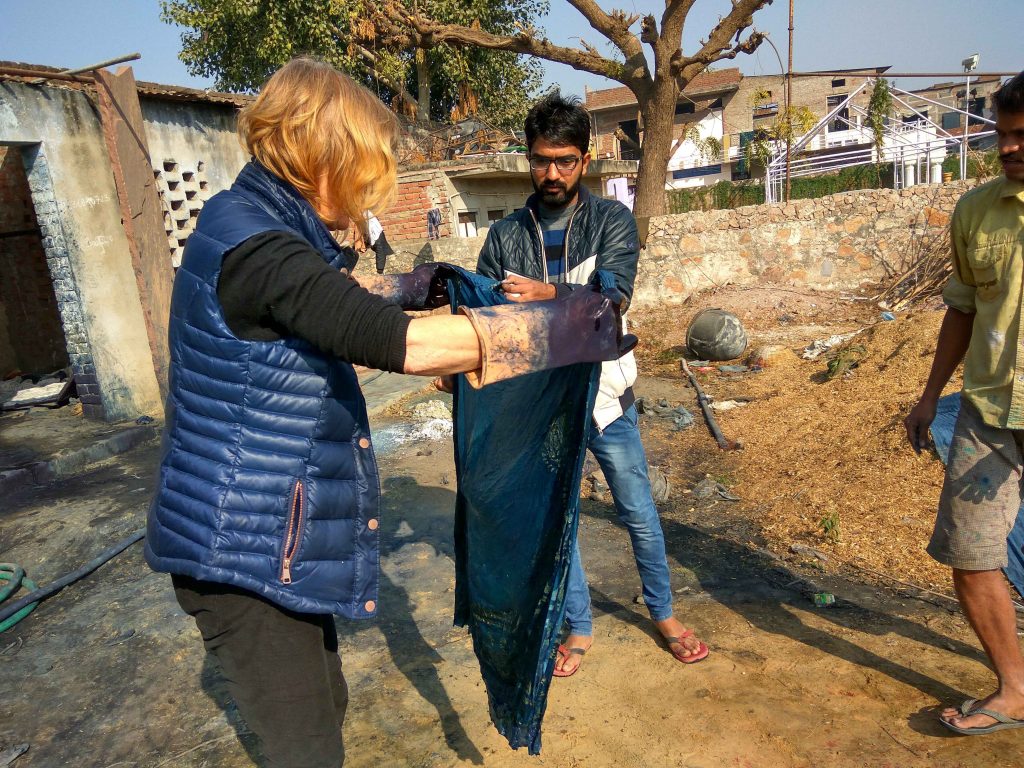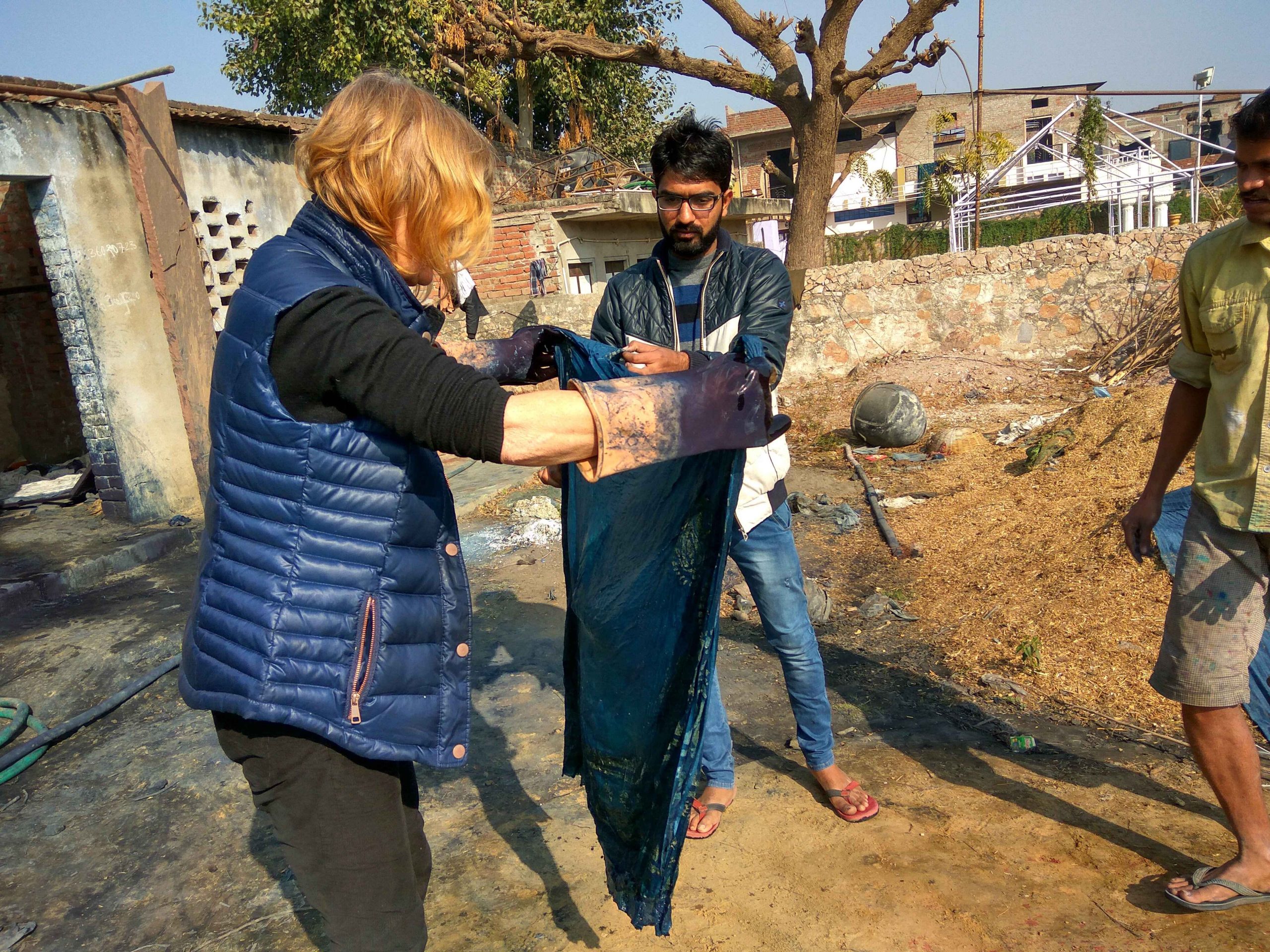Dubu (resist-past)

Dabu is the local name of the resist paste which is applied on those parts of the printed motifs whose colour is sought to be protected and sealed off from the effects of further treatments that the the cloth undergoes in subsequent processes
The three kinds of dabur in use are the kaligar dabu dolidar dabu and gawanrbali dabu.
Of these the kaligur and dolidar dobus are in most common use, whereas the gawanrbali dabu is used very rarely. They differ considerably in adhesive strength and have their own fields of application, considering the rigours that the cloth, with any particular style e of of printing, has to undergo on the subsequent treatments.

Kaligar dabu
This has the least adhesive strength among the three kinds of dabus stated above.
The ingredients of this dabu are kali mitti, gothan ka chuna (lime), hidhan wheat flour and gum.
Kali mitti is a black carth containing appreciable percentage of clay which is gelatinous and hence has a fair adhesive property. It is obtamed in lumps from Kaladera, a place 12 miles away from Bagru.
Bidhan wheat flour is the flour of wheat spoilt by worms and thus rendered unsuitable for consumption as human food.
About 5 kgs of kali mitti, 2 kgs. of lime, 1 kg of of bidhan wheat flour and 250 gms of gum are mixed together with water to form a sem-thick paste. The kali mitti is wetted for 12 hours.
To this are added bidhan wheat flour, lime and gum. The whole mass is then trampled by foot for two hours.
Then water is added to the gelatinous mass in an earthen vessel to form a semi-thick paste. This is left overnight. In the morning the paste is strained into another carthen vessel (handi) (han through a cloth
by which the undissolved grits are removed. This type of resist can withstand processing of the material in liquor only once.
Dolistar dabu:
The ingredients of this dabu are bidhan wheat flour, lime and gum. 1 kg. of bidhan wheat flour, 500 gms, of lime and 50 gms. of gum are mixed together in water to a semi-thick paste. This is is kept overnight and is strained through a layer of cloth into another earthen vessel (handi) to remove the grits etc.
Dolidar dabu has a better adhesive strength than the kaligar dabu and is employed where more than one washing or processing of the material in water or other
liquors is required. Gawanrbali dabu:
The ingredients of this dabu are gawanr seed powder (Cyamopsis detragonoloba), lime, molasses, oil and kali mitti. 1 kg. of roasted gawanr seed powder is boiled to a thick paste with water in a copper or brass vessel and kept aside. 5 kgs. of powdered lime, 250 gms. of molasses and 250 gms. of mitha tel (til oil) cooked in water are spread in the sun so as to form a dry thin sheet of the material. This sheet is then ground to a fine powder. To this I kg. of kali mitti and water are added and the whole mass is mixed to a paste. The cooked gawanr paste kept aside separately is added thereafter along with water to the lime paste and the
whole thing is mixed to form a semi-thick paste, The gawanrbali dabu possesses the best adhesive strength among the three kinds of dabus and is therefore employed where a number of treatments in liquor and washing are required.



